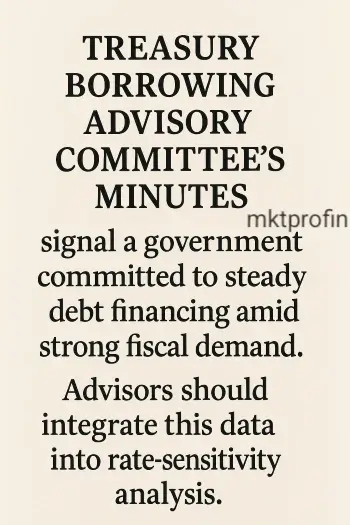Treasury Signals More Borrowing Ahead
The latest minutes from the Treasury Borrowing Advisory Committee reveal how U.S. fiscal policy will shape the bond market going into 2026. The committee projected FY 2025 receipts of $5.235 trillion (up 6% year-over-year) against outlays of $7.01 trillion (up 4%), pointing to continued structural deficits. It also recommended increasing the December five-year TIPS reopening by $1 billion, confirming a steady expansion in government debt issuance.
These metrics are important for fixed-income strategists, brokers, and RIAs. As supply increases, higher bond issuance usually pushes interest rates higher, affecting everything from corporate borrowing costs to Treasury yields. It is crucial to manage fixed-income duration and comprehend the effects on client portfolios when the Treasury signals more aggressive financing plans.
What It Means for Advisors and Investors
Even if the Fed starts to loosen policy, the Treasury supply will probably remain high due to a growing fiscal shortfall. Advisors should monitor auction calendars and duration exposure especially within intermediate maturities where supply increases could steepen the yield curve.
Reinvestment prospects must be evaluated by RIAs overseeing bond-heavy portfolios. While higher coupon issues may increase client income streams, they also increase mark-to-market volatility. Brokers should watch liquidity and bid-ask spreads, as issuance surges can temporarily distort pricing in five- and ten-year maturities. In equity markets, the Treasury’s borrowing trajectory affects valuations indirectly. Rising yields may re-price growth sectors and compress multiples an important cross asset signal for asset-allocation reviews.
Key Takeaway for Financial Professionals
The government’s commitment to consistent debt financing in the face of robust fiscal demand is evident in the minutes of the Treasury Borrowing Advisory Committee. Advisors must incorporate this information into client communications, stress tests, and rate sensitivity studies. Proactive allocation and unambiguous messaging distinguish the proactive advisor from the reactive one as the bond supply grows.


